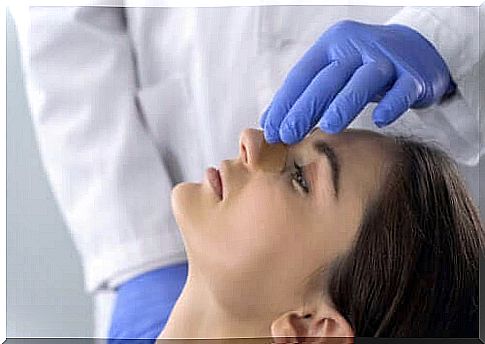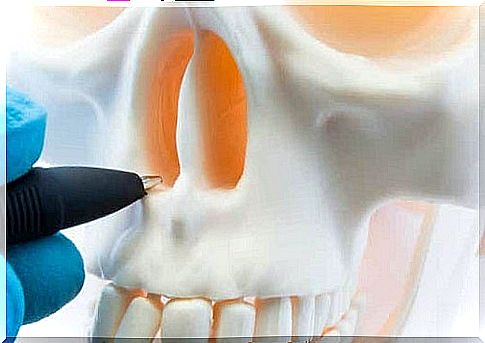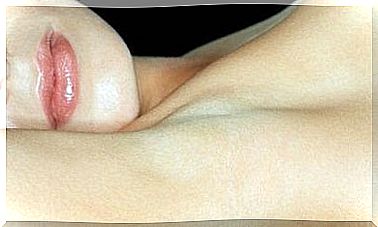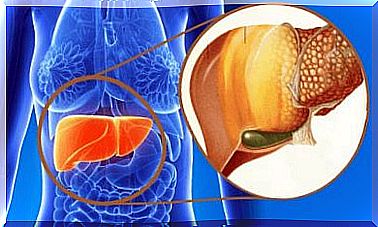What Is Septoplasty And What Does It Entail?

Septoplasty is a surgical procedure that involves repairing the nasal passages and facilitating breathing. Represents an operation that is performed in patients with deviated septum, recurrent rhinitis or sinus problems.
Septoplasty is also known as septal reconstruction. It is important to note that this procedure is not an aesthetic one. Although it generates a change in the shape of the nose, the purpose of the intervention is not to improve physical appearance, but to prevent health problems.
What is septoplasty?
Septoplasty is a corrective surgical procedure that aims to straighten the deviated septum. The septum should be located in the center of the nose. If it is not aligned correctly, there is a risk that one of the nostrils will become narrower. As a result, normal airflow is obstructed and breathing difficulties occur.
The presence of a deviated nasal septum is called septal dysmorphia. This is a change whose origin can be congenital or acquired. In the first case, it is the result of intrauterine compression, trauma at birth or alterations in craniofacial development. In the second case, the problem is caused by a trauma or an alteration of the balanced growth.
Nasal deviation can cause obstruction, predominantly oral respiration, sleep apnea and dry mouth. It is a problem often caused by allergies and narrowing of the nasal passages.

What does this intervention involve?
In most cases, septoplasty involves general anesthesia. It is an outpatient operation, ie it does not require prolonged hospitalization.
The patient who will undergo the operation lies on his back on a stretcher. Its head must be raised above the torso at an angle of 30 °.
The procedure begins with vasoconstrictor and anesthetic infiltrations into the septal mucosa. This allows the correct dissection between cartilage and bone. Thus, the tissue that needs remodeling becomes exposed.
Sometimes it is necessary to remove small pieces of bone and cartilage. The next step is to put the mucosa back in place and attach it with sutures. Usually, the surgeon will place a nasal plug for 48 hours so that there are no bruises or bleeding.
Differences between septoplasty and rhinoplasty
In general terms, rhinoplasty refers to any surgery on the nose. But septoplasty and rhinoplasty are not the same thing. On the one hand, the purpose of septoplasty is to correct a dysmorphic septum and nasal wall. Rhinoplasty aims to change the shape of the nose.
A rhinoplasty is an operation that changes the external structure of the nose, improving its aesthetic appearance. Although in some cases it may help to correct the functioning of this body, this is not the specific purpose of the intervention. In conclusion, the main difference is that septoplasty has a medical origin, while rhinoplasty is of aesthetic origin.
Before and after surgery: issues to consider
To undergo a septoplasty, you need to talk to your doctor about how to prepare and what the risks may be. You must have your medical history at hand in order to be able to answer any questions that the specialist may have about it.
The doctor will perform a physical examination in which he will scan the skin inside and outside the nose. He could take photos that will serve as a reference point for you in the following operation.
It is advisable not to take medicines such as ibuprofen or aspirin before surgery. If you are a smoker, your doctor will ask you to avoid cigarettes in the days before the operation. The day before, you should not eat too much or drink alcohol.
After the operation, you should consider the following:
- Rest with your head slightly raised.
- Avoid blowing your nose for a few weeks.
- Wear clothes that open and close at the front or back to avoid pulling them over your head.
- Do not engage in strenuous activities, such as aerobic exercise.
- Avoid very hot foods and alcohol.
- Do not smoke in the first months.

Recovery after septoplasty
It is natural to experience a slight inflammation of the face, headache and nasal obstruction in the first days after septoplasty. The discomfort is minor during recovery and can be controlled with oral painkillers. Congestion tends to go away after a week.
In general, your doctor will advise you to rest all day after the operation. To relieve inflammation, you can apply cold compresses on your face without wetting your nose. For the first 24 hours, do not take a bath or shower. To clean the affected area, follow the instructions received from the doctor at discharge.
If you have difficulty breathing or heavy nosebleeds that do not stop, call your doctor or go to the hospital. Do the same if you feel a pain that does not improve with painkillers, you have a high fever and chills or your neck is stiff.









